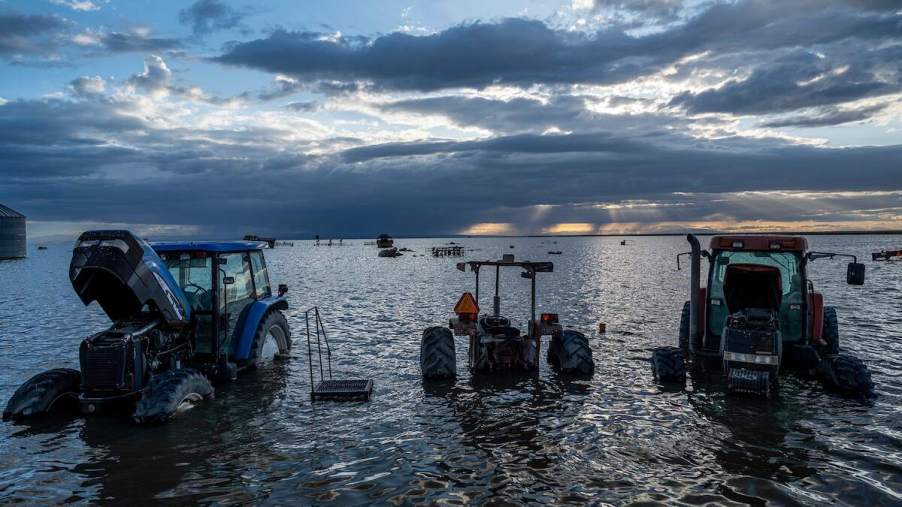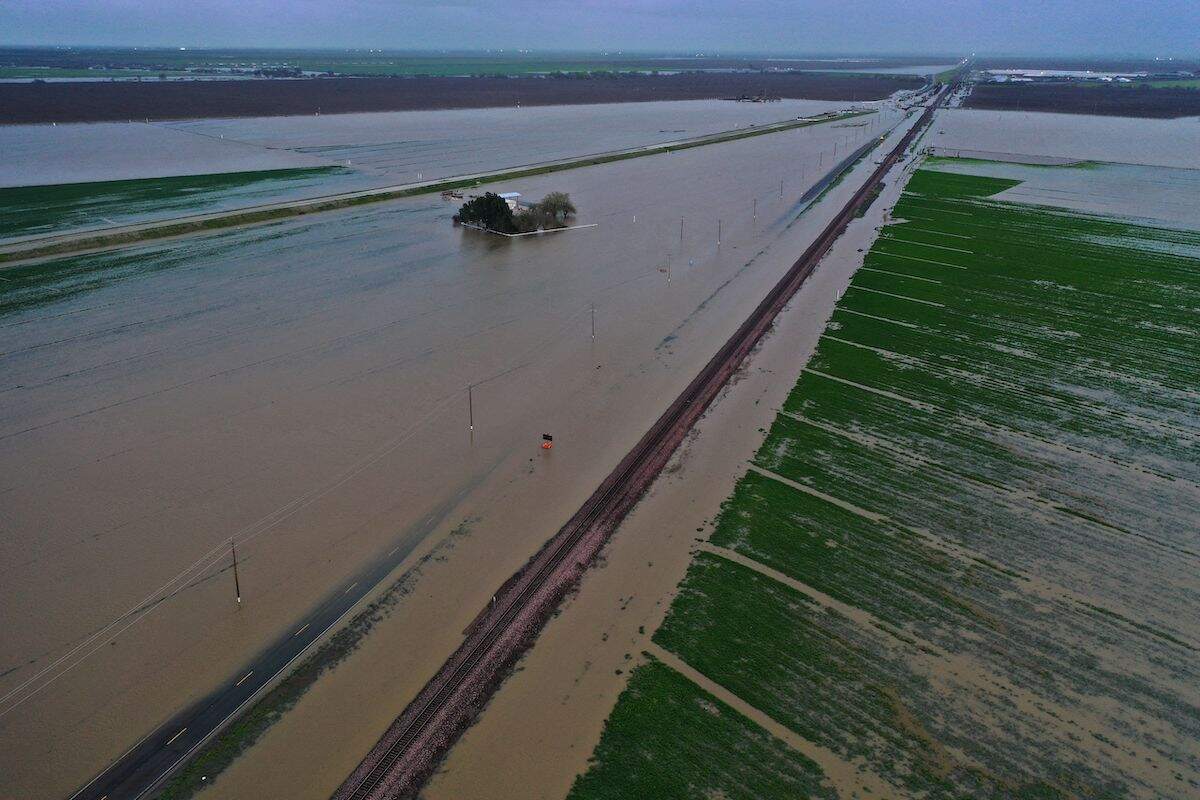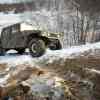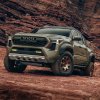
Watch: ‘Chevy to the Levee’ Taken Too Far as CA Farmers Use Trucks to Stop Flooding
Flood control in Central California has hardly been an issue until this month’s recent storms. Massive amounts of rain have fallen, with still more to come next week. Sometimes, desperate times call for desperate measures, as seen in this recent video. It shows farmers driving a Chevrolet pickup truck onto a broken levee to slow the flooding of cropland.
Why did the farmers use the trucks to try to stop the flooding?
Seeing these work trucks used in such a way is cringeworthy. But the record rainfall is increasing instances of river banks overflowing, as in this scene in the San Joaquin Valley. That’s the Tule River, and the flooding is slowly infiltrating a pistachio orchard.
The outflow of water is too fierce to try to make repairs. So farmers use trucks to try to stop the flooding. They load a Ford F-150 and a Chevrolet Silverado with dirt and mud. Then they fix the pickups’ throttles in an open position, and one of the farmers reaches into the truck and shifts it into drive.
What about environmental damage from the trucks’ oil and gasoline?
The truck careens into the levee, and the floodwaters force the pickup into the breach. But that’s not where the action ends. Subsequent images show the farmers piled dirt onto the pickups, slowly filling the levee. The final shots show their finished work, with the graded dirt burying the trucks as the basis for this new levee.
Yes, the pickups still have their gas and oil, which could harm the orchard and the environment. But these trucks’ burial isn’t their final resting place. Longtime farmer Michael Cannon said they will see the light of day once the water subsides. Of course, the trucks are toast, but at least they won’t be leaching out contaminants.
Are junk cars and trucks effective at controlling erosion?

For decades, we’ve seen cars and trucks lining river banks to shore up river erosion. Known as “rip-rap,” junk cars line riverbanks and levees as the main obstruction. The native tree limbs, brush, and rocks fill in around the junk cars to protect the dirt and brush from further erosion.
If you wonder why you don’t see this done often, the practice is now against the law in most places in the U.S. Besides the blight, leaching oil and gasoline harms the rivers’ edges. That’s not to mention rusting metal and whatever else is degrading from the cars’ slow deterioration.
The farmers’ trucks served a purpose, or did they?
But as for the makeshift levee, the good news is it looks like the orchard survived. Let’s hope the combo of trucks and dirt will hold up a while longer as Central California braces for another barrage of rainstorms set to hit next week.



